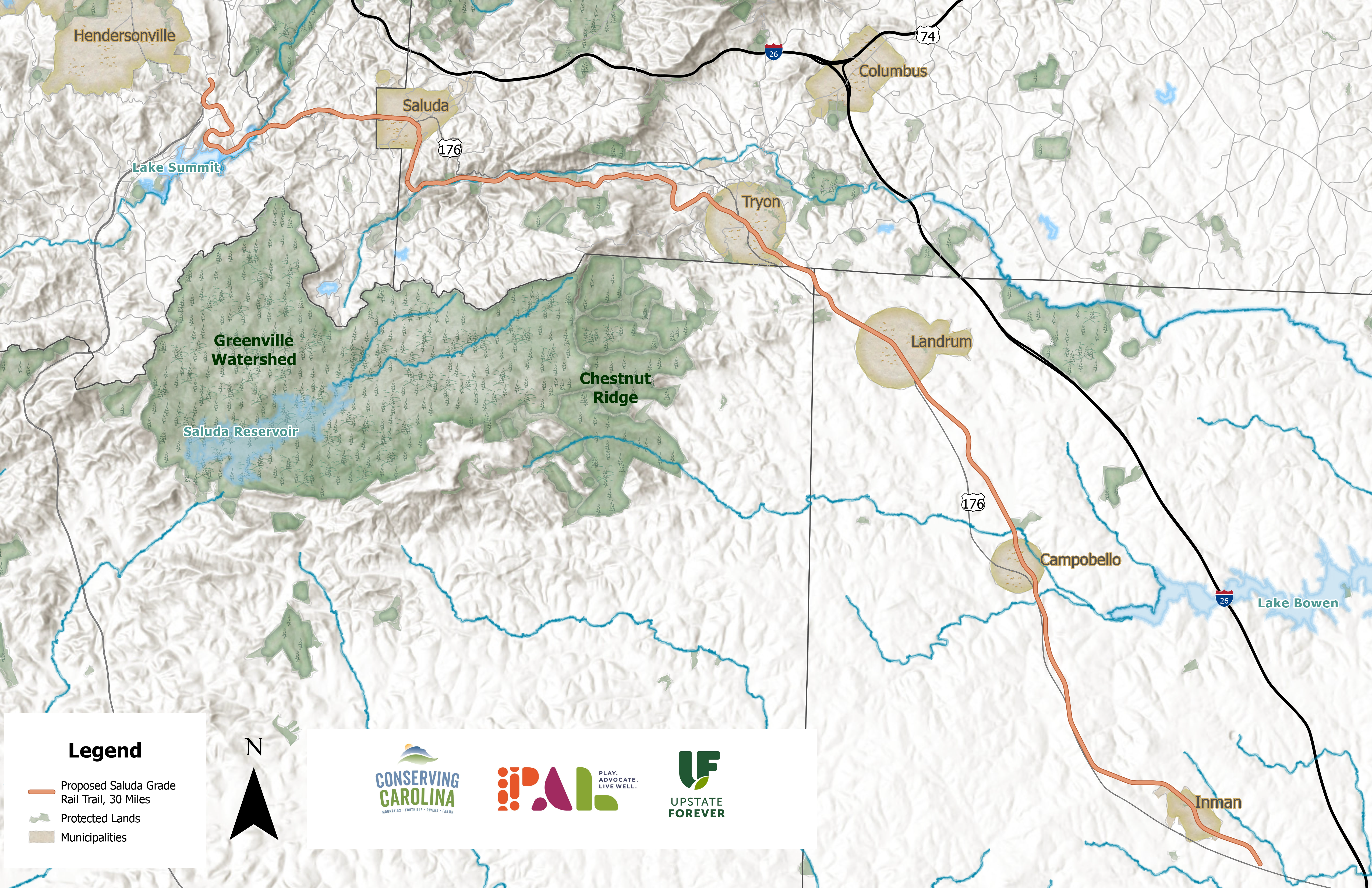Connecting Mountain Towns
Saluda Grade Rail Trail
Traversing approximately 30 miles from Upstate South Carolina through Western North Carolina lies the inactive Saluda Grade railroad. A coalition of three local nonprofit organizations — Upstate Forever, PAL, and Conserving Carolina — are working together to transform this unused line into a vibrant trail corridor passing through downtown Inman, Gramling, Campobello, Landrum, Tryon, and Saluda, as well as the picturesque Piedmont countryside, the Pacolet River valley with its plunging waterfalls, and the spectacular scenery around the Green River and Lake Summit.
 MORE INFORMATION
MORE INFORMATION
Explore the new trail website
We're thrilled to share the new website for the Saluda Grade Trail. Here you can find more information and a map of the proposed rail trail, read answers to frequently asked questions, learn about the history of the Saluda Grade rail line, support efforts to create this multi-use trail connecting Upstate SC and Western NC, and more: saludagradetrail.org
Sign up to receive the latest news
The most important thing for the success of the Saluda Grade Trail is for community members to actively show their support. Sign up here for email updates about the trail including opportunities to get involved.
POTENTIAL BENEFITS OF THE TRAIL
Transforming the rail line, which has been inactive for more than 20 years, into a multi-use recreational trail would yield significant benefits for the communities along the envisioned Saluda Grade Trail. Read more about the potential health, economic, environmental, and myriad benefits the trail could bring to Upstate SC and Western NC.
Find answers to frequently asked questions
Why make the Saluda Grade into a trail? Will the Saluda Grade connect to other rail trails or greenways? Where will funding for the trail come from? Who will manage and maintain the rail trail? Find answers to these questions and more in the Saluda Grade Trail FAQs.
Donate to help make the trail a reality
Your donation will be multiplied as much as 5 times as the Saluda Grade Trail coalition bring in major grants that require private donations as matching funds.
Contributions to the Saluda Grade Trail Implementation Fund may be made online through the Spartanburg County Foundation website or by calling (864) 582-0138.
You can also make a donation through any of the three nonprofits that are leading the effort. To support the effort on the South Carolina side, donate through PAL: Play, Advocate, Live Well, and Upstate Forever. To support the effort on the North Carolina side, donate through Conserving Carolina. Donations made through any of these nonprofits are tax deductible.


